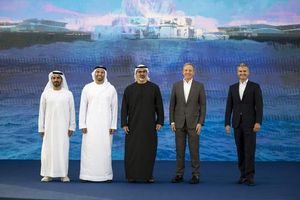At the upcoming Google I/O developer conference, the tech giant is set to unveil a new version of its Android design language, transitioning from "Material 3" to "Material Design 3 Expressive." This change is part of an ongoing evolution of the design system, which aims to enhance how developers create user interfaces for Android applications.
According to a mailing list of events published on the Google website and a blog post that accidentally leaked online, the updated design will focus on crafting interfaces that "establish an emotional connection with people." This shift reflects a broader trend in design, where emotional engagement is becoming increasingly important in user experience.
Material Design, which was first introduced in 2014, is Google’s open-source design system that provides guidelines for creating user interfaces across Android applications. It encompasses various aspects of design, including visual aesthetics, motion design, and user interaction. The last significant update, known as "Material You" or "Material 3," was launched in May 2021, allowing users to personalize their Android interfaces based on their wallpaper choices, thus creating a more cohesive and personalized experience.
While Material 3 Expressive may not be as extensive as its predecessor, it represents an important iteration of the Material You language. The leaked blog post highlighted research indicating that users generally prefer more expressive designs, which can significantly improve usability, especially in educational contexts. Google noted that such designs draw attention to key elements and user actions, leading to a "significant increase in productivity." This is particularly beneficial for older users, as it levels the playing field for individuals of all ages.
However, it's important to note that Google emphasized that expressive design is not a "universal solution." Developers will still need to adhere to established design standards and templates when creating their application interfaces to ensure usability and accessibility.
The blog post was first spotted by 9to5Google and has since been archived by the Wayback Machine. Although Google quickly removed the post, the session titled "Create Next-Level UX with Material 3 Expressive" indicates that the company is preparing to present this updated design system at the end of the month. During the I/O conference, developers will learn how to utilize "new emotional design templates" to enhance engagement, usability, and the overall appeal of their products.
In addition to the design updates, Google has also begun rolling out the latest beta version of Android Auto. Initially, it appeared that this update did not introduce any visible changes, but it has now been confirmed that there is at least one significant alteration. The familiar blue navigation arrow in Google Maps is being replaced with a user-customized car icon.
For years, Google Maps for Android Auto has utilized a blue navigation arrow, but with the release of the latest beta version, this will change in Auto 14.3. As clarified by Tutttandroid, users will now see a car icon instead of the traditional blue arrow when navigating through the Maps application.
This change aligns with earlier reports from digital corridors about Google Maps working on replacing the navigation arrow with a personalized car icon. After enhancing mobile devices, Google appears to be moving toward offering users the ability to customize their navigation icons in Android Auto, which could significantly enhance the user experience.
Overall, these updates signify Google’s commitment to improving user engagement and personalization across its platforms. As the company prepares to unveil these changes at Google I/O, developers and users alike are eager to see how these innovations will enhance the Android experience.
With the introduction of Material 3 Expressive and the personalized navigation icons, Google is clearly aiming to create a more engaging and user-friendly environment for Android users. As technology continues to evolve, the focus on emotional design and personalization will likely play a crucial role in shaping the future of user interfaces.
As developers gear up for the I/O conference, the anticipation surrounding these updates is palpable. With the promise of new tools and design strategies, the future of Android development looks bright, and users can expect a more intuitive and emotionally resonant experience in the near future.
In conclusion, the upcoming Google I/O conference promises to be a pivotal moment for Android design and user experience. With the transition to Material Design 3 Expressive and the introduction of personalized navigation icons, Google is poised to redefine how users interact with their devices, making the experience more engaging and tailored to individual preferences.




